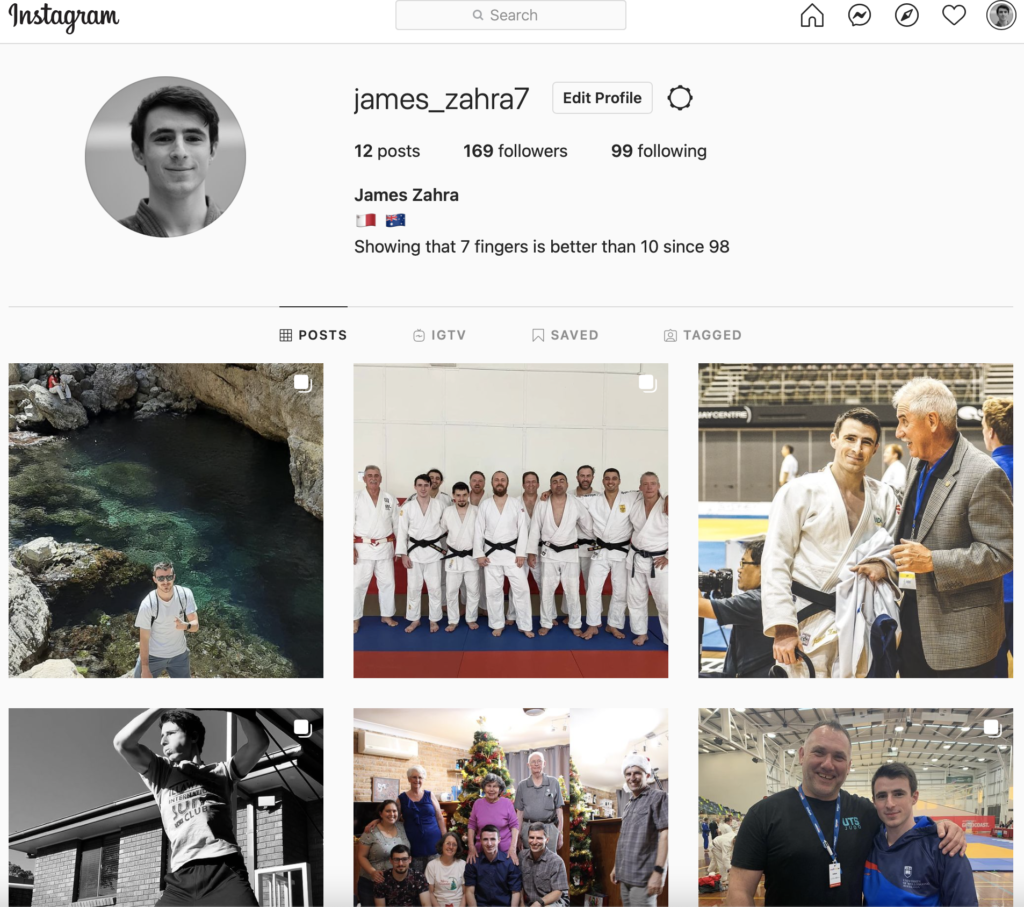What is sense of self in the world of self promotion and marketing
Social media has become the way people represent themselves to each other, but these selfs that are being displayed how real are they. Sometimes social media can be represented as a ‘Third space’. Pennington (2018) defines Third spaces as “sites where hegemonic and normative ways of seeing the world are challenged and, perhaps, transcended. For Hoover and Echchaibi (nd: 3), third space is something that is ‘fluid, conceptual, and imagined,’ as much a tool to ‘think with’ as a site of investigation” Basically this means social media is a place where reality and imagination combine to present this combination image of self to others.
As Instagram is really the only platform I post content (if still very irregularly) too I will be focusing in on instagram, the sense of self I portray and the way the platform in general presents people and their sense of self.
So how do I use instagram ?

My instagram is a public facing account (my only public social media account apart from twitter for university). I use my instagram page to mostly display my current Judo adventures, although there are a couple other posts mixed in there. As a consumer on instagram I mostly just skim through a few friends stories and posts and am not engaged in really any other content except for the IJF (international Judo federation) posts sometimes around competitions I am watching.
My posting is actually quite in line with smith et al. (2015) findings which is quite interesting and suggests I might be framing my own self projection based on my experience of looking at athletes projected self online.
I generally take the approach to anything I post on instagram needs to be appropriate for all audiences from friends to potential employers as it is public facing. So this means I am representing a semi professional self and things I do that I find interesting/cool enough to share. I would say my profile is quite authentic but also very selective in the sense that I say it how I see it when I post but I don’t post much.
It also worth noting as Slater et al. (2017) discusses the limited affect of the kind of inspirational images in instagram not really actually being all that useful for the user but self compassion (“healthy ways of relating to oneself in times of suffering, whether suffering is caused by failure, perceived inadequacy, or general life difficulties” Braehler et al. (2020)) this kind of behaviour can be seen through some of my posts after injuries/disappointing competition results. Which again I was not conscious of that being part of my activity or necessarily why I thought these things were post worthy but I makes more sense now.
The affordances of instagram that allow me to do this is the nature of the following aspect combined with the public profile ability where I can provide a public facing image and not see everyone that has seen my contents own content to but they can see mine if they want. Instagram specifically works well for this as they can see when I post new things without having to come looking for it and they can get a quick picture view of what I do by heading to my page.
Another big thing is the way stories can be close friends only implemented into instagram now. Now that I am living across the world I intend to use these affordances to show some more of my adventures that my friends would normally know about through discussions in person. This also allows the semi professional self being maintained and the quality of posts unaffected but establishing both selfs on one platform.
The way instagram organises news feeds also provides an easy way to have a global reach as it focuses on who it thinks you will interact with over when things were posted, this means people I know in Australia, Malta and elsewhere will still see my posts with less importance on when I post than other platforms.
References:
Pennington, R. (2018) ‘Social media as third spaces? Exploring Muslim identity and connection in Tumblr’, International Communication Gazette. 80: 7, pp 620-636
Slater, A, Varsani, N & Diedrichs, PC 2017, ‘fitspo or #loveyourself? The impact of fitspiration and self-compassion Instagram images on women’s body image, self-compassion, and mood’, Body image, vol. 22, pp. 87–96.
Smith, LR & Sanderson, J 2015, ‘I’m Going to Instagram It! An Analysis of Athlete Self-Presentation on Instagram’, Journal of broadcasting & electronic media, vol. 59, no. 2, pp. 342–358.
Christine Braehler, Kristin Neff, 2020, “Chapter 20 – Self-compassion in PTSD”, Etiology, Assessment, Neurobiology, and Treatment 2020, Pages 567-596



